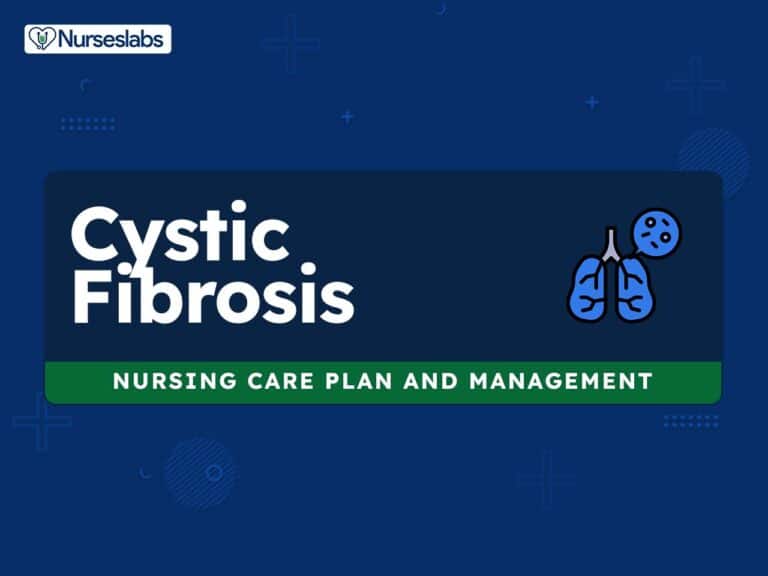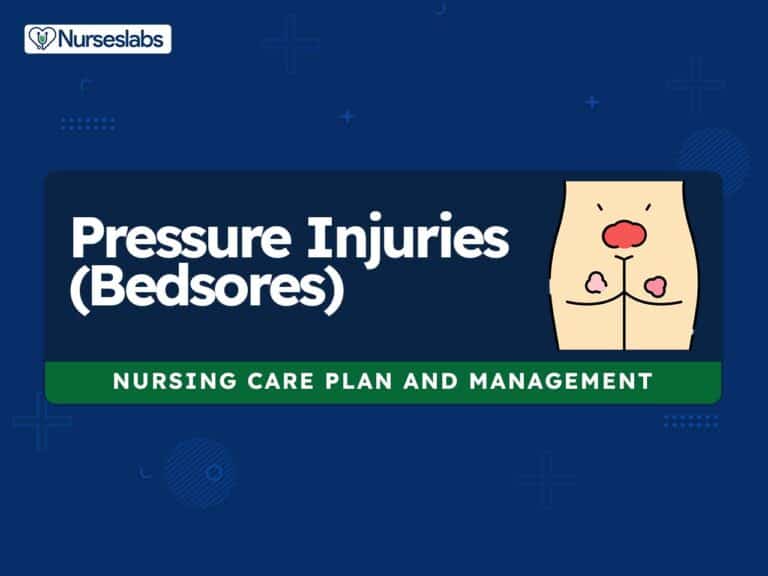This article discusses nursing care plans and management for patients with acute rheumatic fever, a serious inflammatory condition that affects the heart, joints, and other organs. Learn about the essential components of nursing care for this condition, nursing diagnosis, nursing goals, and nursing interventions, and how nurses can provide effective care for patients with acute rheumatic fever.
What is Acute Rheumatic Fever?
Acute rheumatic fever is an inflammatory autoimmune disease that occurs 2 to 6 weeks following an untreated or undertreated group A beta-hemolytic streptococcal infection. It affects the heart, joints, central nervous system (CNS), and skin. It is prevented by prompt treatment of the infection through prophylaxis of antibiotics within 9 days of onset of streptococcal infection before further complications can develop. Because rheumatic heart disease does not occur after only one attack and children are susceptible to recurrent attacks of rheumatic fever, it is vital that an initial episode is diagnosed and treated, and that long-term prophylactic therapy (5 years or more) is given following the acute phase.
The signs and symptoms of rheumatic fever are classified into major manifestations (polyarthritis, carditis, chorea, subcutaneous nodules, and erythema marginatum) and minor manifestations (fever, arthralgia, ECG, and laboratory changes) according to the revised Jones criteria. The diagnosis is based upon the presence of 2 major manifestations, or 1 major and 2 minor manifestations, supported by evidence of a preceding group A streptococcal infection is indicative of acute rheumatic fever.
Nursing Care Plans and Management
Nursing care planning goals for a child with acute rheumatic fever include reducing pain, conserving energy, promoting activity tolerance, and providing education about the disease, treatment, and preventive measures needed to avoid recurrence and possible complications.
Nursing Problem Priorities
The following are the nursing priorities for patients with acute rheumatic fever:
- Administer appropriate antibiotics and monitoring for effectiveness and side effects.
- Manage inflammation and symptoms with anti-inflammatory medications.
- Monitor and manage cardiac complications.
- Educate patients and families on adherence to antibiotic prophylaxis and recognizing symptoms.
Nursing Assessment
Assess for the following subjective and objective data:
- Verbal description of pain
- Guarding and protective behavior of painful joints
- Warmth at affected joints
- Edema
- Redness
Assess for factors related to the cause of acute rheumatic fever:
- Inflammation
- Arthralgia
Nursing Diagnosis
Following a thorough assessment, a nursing diagnosis is formulated to specifically address the challenges associated with acute rheumatic fever based on the nurse’s clinical judgement and understanding of the patient’s unique health condition. While nursing diagnoses serve as a framework for organizing care, their usefulness may vary in different clinical situations. In real-life clinical settings, it is important to note that the use of specific nursing diagnostic labels may not be as prominent or commonly utilized as other components of the care plan. It is ultimately the nurse’s clinical expertise and judgment that shape the care plan to meet the unique needs of each patient, prioritizing their health concerns and priorities.
Nursing Goals
Goals and expected outcomes may include:
- The child will verbalize less pain by using a scale of 1 to 10.
- The child will appear relaxed without guarding.
- The child’s joints will not become inflamed, red, or warm.
Nursing Interventions and Actions
Therapeutic interventions and nursing actions for patients with acute rheumatic fever may include:
1. Managing Acute Pain
Inflammation from ARF can cause acute pain due to arthralgia, or joint pain, as well as chest pain, shortness of breath, and headaches. The severity of the pain can vary depending on the extent of the inflammation and the specific areas of the body affected.
Assess the child’s pain perception using an appropriate scale every 2 to 3 hours.
Provides information about the pain level of the child.
Assess changes in behavior, such as high-pitched crying, irritability, restlessness, refusal to move, facial grimace, and aggressive or dependent behavior.
Nonverbal pain descriptions that are age-related as a child or infant may be unable to describe pain; fear and anxiety associated with pain cause changes in behavioral responses.
Examine affected joints, degree of joint pain, and level of joint movement.
Provides data about pathologic changes in joints; reversible joint involvement usually affecting large joints, such as knees, hips, wrists, and elbows; an increase in number of affected joints occurs over a period of time.
Elevate involved extremities above heart level.
Improves circulation to the heart to alleviate edema.
Maintain bed rest during the acute stage of the disease.
Promotes relief of joint pain caused by movement.
Advise positional changes every 2 hours while maintaining body alignment.
Prevents contractures and promotes comfort.
Apply bed cradle under outside covers over painful joints.
Avoids pressure on painful parts.
Assist in gentle handling and supporting of body parts.
Prevents extra pain to affected parts.
Provide toys, and games for quiet, sedentary play.
Provides diversionary activity to distract from the pain.
Encourage the use of nonpharmacologic interventions such as imagery, relaxation, distraction, cutaneous stimulation, and heat application.
Provides additional measures to decrease pain perception.
Stress the importance of limited activity or the amount of joint movement allowed.
Prevents increase or exacerbation of pain.
Teach parents and children about the need for analgesia and that it will help him/her to feel better.
Controls pain, and allows for uninterrupted sleep and activity within the tolerance level.
Reassure parents and child that joint involvement is temporary, that pain and edema will subside, and that joints will return to normal size.
Reduces anxiety related to fear of irreversible damage.
Educate parents in proper body positioning and handling of affected parts.
Promotes comfort and avoids pain and contractures during bed rest.
Administer salicylates and anti-inflammatory medications as prescribed, and advise the child that the medication will decrease the pain; administer a sustained action analgesic before bedtime or 1 hour before anticipated movement.
Relieves pain, and inflammation in joints and provides rest and comfort.
2. Normalizing Body Temperature and Managing Fever
Children with Acute Rheumatic Fever can experience hyperthermia, or high fever because the condition triggers an inflammatory response throughout the body. Fever is the body’s natural response to infection and inflammation and is often accompanied by other symptoms such as fatigue, weakness, and sweating. Hyperthermia can cause discomfort, disrupt sleep, and interfere with the patient’s ability to perform activities of daily living.
Assess temperature, heart rate, and blood pressure frequently.
A temperature of 101°F (38.3°C) or above is noted along with redness, pain, and swelling of the joints; HR and BP increase as hyperthermia progresses.
Observe the child for signs of discomfort, such as restlessness or irritability, and assess the level of pain associated with the fever.
High temperature can cause the child’s body to feel warm and uncomfortable, causing sweats, chills, and muscle aches. The fever can also disrupt sleep and cause fatigue, leading to decreased energy levels and overall discomfort.
Monitor the child’s respiratory rate and effort, as well as oxygen saturation levels as indicated.
Increased temperature can cause increased respiratory rate and effort, leading to tachypnea and shortness of breath. It can also lead to decreased oxygen saturation, especially in children who already have respiratory problems.
Monitor the child’s hydration status, and encourage fluids to help prevent dehydration.
High fever can cause the body to lose fluids through sweating, which can result in dehydration. Dehydration can lead to complications such as hypotension, electrolyte imbalances, and impaired organ function.
Assess the child’s level of consciousness and cognitive status, and report any changes to the healthcare team.
High fever can lead to confusion, disorientation, and other cognitive changes, particularly in children. Severe hyperthermia can also cause seizures or loss of consciousness, which can be life-threatening.
Provide a tepid sponge bath.
Helps lower the body temperature and provide comfort.
Modify the child’s environment such as room temperature and bed linens as indicated.
Room temperature may be accustomed to near normal body temperature and blankets and linens may be adjusted as indicated to regulate the temperature of the client.
Eliminate excess clothing and covers.
Exposing skin to room air decreases warmth and increases evaporative cooling.
Maintain bed rest, especially during the acute febrile phase.
Conserves energy and reduces metabolic rate.
Teach the child and family members about the signs and symptoms of hyperthermia and help in identifying factors related to the occurrence of fever; discuss the importance of increased fluid intake to avoid dehydration.
Providing health teachings to the patient and family aids in coping with the disease condition and could help prevent further complications of hyperthermia.
Administer nonsteroidal anti-inflammatory drugs (NSAIDs) as prescribed; Observe for any untoward effects of NSAIDs.
Reduces inflammation and pain; Side effects of NSAIDs may include abdominal pain, tinnitus, dizziness, headache, stomach ulcer, and GI bleeding.
Administer a course of penicillin therapy or a single intramuscular dose of benzathine penicillin.
Complete antibiotic treatment of penicillin eliminates group A streptococcus infection.
3. Promoting Tolerance to Activity and Gradual Mobility
Children with acute rheumatic fever can experience weakness and decreased tolerance to activity due to inflammation and damage to the heart valves, which can result in reduced cardiac output and decreased exercise tolerance. Additionally, patients may experience joint pain and swelling, which can limit mobility and physical activity. The fever and other symptoms of the disease can also cause fatigue and weakness, further contributing to activity intolerance.
Assess the child’s mobility and physical activity level.
Provides baseline information for formulating nursing goals during goal setting.
Assess and evaluate the nutritional health status of the client.
Adequate energy reserves are needed during activity.
Monitor pulse rate, and blood pressure; observe for dyspnea, use of accessory muscles, and skin color before and after activity.
Identifies the cardiopulmonary status of the client needed to help determine the ability to tolerate activity.
Provide emotional support and a positive attitude regarding abilities.
Appropriate supervision during early efforts can enhance confidence.
Encourage adequate rest periods in between activities.
Allows optimal performance during an activity.
Assist with activities of daily living as needed such as eating, bathing, dressing, and elimination.
Decreases oxygen consumption and boosts confidence in performing a task.
Encourage and teach the child active range-of-motion exercises.
Helps improve joint function and prevent muscle atrophy.
Encourage the child to increase fluid intake as indicated and allow a dietary intake of low sodium and low sugar diet.
A high sodium diet can cause fluid retention and worsen symptoms of ARF while sugary foods and drinks, such as soda, candy, and desserts can cause inflammation and can also aggravate ARF symptoms.
Instruct the child to resume activity gradually once asymptomatic at rest and indicators of acute inflammation have resolved.
Help pace the child’s energy and provide maximum comfort.
4. Initiating Infection Control and Prevention
Children with Acute Rheumatic Fever (ARF) are at an increased risk for infection due to their weakened immune system. ARF is caused by a bacterial infection, which can damage the heart and other organs. The inflammation caused by the infection can also weaken the immune system, making it harder for the body to fight off other infections.
Assess parents’ knowledge and skills in the administration of prescribed antimicrobials; daily oral administration or monthly intramuscular injections.
Providing long-term antibiotic therapy (as long as 5 years) as a preventive measure may be challenging.
Monitor for chest pain, shortness of breath, fatigue, cough, night sweats, friction rub, gallop during the acute stage of the disease.
Signs and symptoms of carditis, which may result in endocarditis causing vegetation that becomes fibrous at the valve areas that is at increased risk of recurrent infections.
Teach the children and family members good proper hand hygiene.
Good hygiene practices, such as washing hands frequently and avoiding contact with others who are sick, help reduce the risk of infection.
Instruct the other staff, family members, and significant others to use personal protective equipment when in contact with the patient.
Personal Protective Equipment (PPE) is important for children with Acute Rheumatic Fever (ARF) to prevent the spread of infection. ARF is caused by a bacterial infection, and children with ARF may be more susceptible to other infections due to weak immune systems.
Ensure that the child is up-to-date with their vaccinations, including the influenza vaccine, pneumococcal vaccine, and meningococcal vaccines.
Vaccinations can help prevent a variety of infections that could potentially worsen the condition of a child with ARF. They can also help prevent the spread of infection in the community and protect other vulnerable individuals who may be at risk for severe infections.
Ensure that the child’s room and equipment are clean and disinfected to prevent the spread of infection.
Maintaining a clean environment is important for children with Acute Rheumatic Fever (ARF) because their weakened immune system makes the children more susceptible to infections. It can also help in decreasing exposure to environmental allergens and irritants that can exacerbate their condition.
Encourage the children to follow a diet rich in fruits, vegetables, whole grains, and lean proteins.
These food items can provide the nutrients and vitamins needed to support the immune system and promote healing.
Administer antibiotic therapy during the acute phase of the disease as prescribed.
Inhibits cell wall synthesis of microorganisms, destroying the causative pathogen.
Instruct in the long-term antibiotic regimen, the need for protection prior to dental work or any invasive procedure, and inform of the importance to prevent a recurrence.
Therapy begins after the acute phase and medical supervision is needed for life as rheumatic fever may recur; a high percentage of children who incur the disease have cardiac complications later in life.
Notify the physician immediately of any upper respiratory infections, elevated temperature, joint pain, or non-compliance to antibiotic therapy.
This may indicate a recurrence of the disease or the need to change or adjust medication.
Recommended Resources
Recommended nursing diagnosis and nursing care plan books and resources.
Disclosure: Included below are affiliate links from Amazon at no additional cost from you. We may earn a small commission from your purchase. For more information, check out our privacy policy.
Ackley and Ladwig’s Nursing Diagnosis Handbook: An Evidence-Based Guide to Planning Care
We love this book because of its evidence-based approach to nursing interventions. This care plan handbook uses an easy, three-step system to guide you through client assessment, nursing diagnosis, and care planning. Includes step-by-step instructions showing how to implement care and evaluate outcomes, and help you build skills in diagnostic reasoning and critical thinking.

Nursing Care Plans – Nursing Diagnosis & Intervention (10th Edition)
Includes over two hundred care plans that reflect the most recent evidence-based guidelines. New to this edition are ICNP diagnoses, care plans on LGBTQ health issues, and on electrolytes and acid-base balance.

Nurse’s Pocket Guide: Diagnoses, Prioritized Interventions, and Rationales
Quick-reference tool includes all you need to identify the correct diagnoses for efficient patient care planning. The sixteenth edition includes the most recent nursing diagnoses and interventions and an alphabetized listing of nursing diagnoses covering more than 400 disorders.

Nursing Diagnosis Manual: Planning, Individualizing, and Documenting Client Care
Identify interventions to plan, individualize, and document care for more than 800 diseases and disorders. Only in the Nursing Diagnosis Manual will you find for each diagnosis subjectively and objectively – sample clinical applications, prioritized action/interventions with rationales – a documentation section, and much more!

All-in-One Nursing Care Planning Resource – E-Book: Medical-Surgical, Pediatric, Maternity, and Psychiatric-Mental Health
Includes over 100 care plans for medical-surgical, maternity/OB, pediatrics, and psychiatric and mental health. Interprofessional “patient problems” focus familiarizes you with how to speak to patients.

See also
Other recommended site resources for this nursing care plan:
- Nursing Care Plans (NCP): Ultimate Guide and Database MUST READ!
Over 150+ nursing care plans for different diseases and conditions. Includes our easy-to-follow guide on how to create nursing care plans from scratch. - Nursing Diagnosis Guide and List: All You Need to Know to Master Diagnosing
Our comprehensive guide on how to create and write diagnostic labels. Includes detailed nursing care plan guides for common nursing diagnostic labels.
Other nursing care plans for pediatric conditions and diseases:
- Acute Glomerulonephritis | 4 Care Plans
- Acute Rheumatic Fever | 4 Care Plans
- Apnea | 4 Care Plans
- Brain Tumor | 3 Care Plans
- Bronchiolitis | 5 Care Plans
- Cardiac Catheterization | 4 Care Plans
- Cerebral Palsy | 7 Care Plans
- Child Abuse | 4 Care Plans
- Cleft Lip and Cleft Palate | 7 Care Plans
- Congenital Heart Disease | 5 Care Plans
- Congenital Hip Dysplasia | 4 Care Plans
- Croup Syndrome | 5 Care Plans
- Cryptorchidism (Undescended Testes) | 3 Care Plans
- Cystic Fibrosis | 5 Care Plans
- Diabetes Mellitus Type 1 (Juvenile Diabetes) | 4 Care Plans
- Dying Child | 4 Care Plans
- Epiglottitis | 5 Care Plans
- Febrile Seizure | 4 Care Plans
- Guillain-Barre Syndrome | 6 Care Plans
- Hospitalized Child | 5 Care Plans
- Hydrocephalus | 5 Care Plans
- Hypospadias and Epispadias | 4 Care Plans
- Intussusception | 3 Care Plans
- Juvenile Rheumatoid Arthritis | 4 Care Plans
- Kawasaki Disease | 6 Care Plans
- Meningitis | 7 Care Plans
- Nephrotic Syndrome | 5 Care Plans
- Osteogenic Sarcoma (Osteosarcoma) | 4 Care Plans
- Otitis Media | 4 Care Plans
- Scoliosis | 4 Care Plans
- Spina Bifida | 7 Care Plans
- Tonsillitis and Adenoiditis | 4 Care Plans
- Umbilical and Inguinal Hernia | 4 Care Plans
- Vesicoureteral Reflux (VUR) | 5 Care Plans
- Wilms Tumor (Nephroblastoma) | 4 Care Plans
Other nursing care plans for cardiovascular system disorders:
- Angina Pectoris (Coronary Artery Disease)
- Cardiac Arrhythmia (Digitalis Toxicity)
- Cardiac Catheterization
- Cardiogenic Shock
- Congenital Heart Disease
- Decreased Cardiac Output & Cardiac Support
- Heart Failure
- Hypertension
- Hypovolemic Shock
- Impaired Tissue Perfusion & Ischemia
- Myocardial Infarction
- Pacemaker Therapy





































Leave a Comment